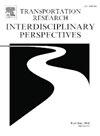A solution to the Single-School school bus routing problem considering accessibility and economy
IF 3.8
Q2 TRANSPORTATION
Transportation Research Interdisciplinary Perspectives
Pub Date : 2025-07-01
DOI:10.1016/j.trip.2025.101506
引用次数: 0
Abstract
The school bus routing problem (SBRP) involves the optimal placement of bus stops and design of bus routes. A well-designed SBRP strategy can reduce the operating costs of the school bus system, improve accessibility, and ensure timely arrival for teachers and students. This paper integrates the heuristic Dijkstra algorithm with Geographic Information Systems (GIS) to propose a three-stage heuristic GIS optimization method (THGO) for solving the Single-School Multi-Route School Bus Routing Problem (SSMR-SBRP).
In the first stage, we use a clustering method based on the minimum covering circle to set bus stops that passengers can reach on foot. In the second stage, we establish a mixed-integer linear programming (MILP) model for SSMR-SBRP, aiming to minimize the total travel distance. Heuristic algorithms, such as Ant Colony Optimization (ACO), Particle Swarm Optimization (PSO), and Floyd-Warshall, are employed to determine the initial solution, which includes the optimal number of buses and their preliminary routes. In the third stage, Dijkstra’s algorithm is combined with GIS to optimize the bus routes, with a focus on accessibility and economy.
Experimental results demonstrate that the THGO method can efficiently find the global optimal solution while satisfying constraints such as time windows, bus capacity, and road directionality. The optimized routes reduce driving distance by 23.13%, save 30.41% of driving time, and cut operating costs by 26.02% compared to the current school bus system.
This paper validates the feasibility and advantages of the THGO method using the SSMR-SBRP case study. Moreover, by introducing resource-sharing and constraint mechanisms into the model, the THGO framework can be extended to multi-school, heterogeneous school bus scenarios, offering a practical solution to the Multi-School Mixed School Bus Routing Problem.
考虑可达性和经济性的单校校车路线问题的解决方案
校车路线问题(SBRP)涉及到公交站点的优化布置和公交路线的设计。精心设计的SBRP策略可以降低校车系统的运营成本,改善可达性,并确保教师和学生及时到达。将启发式Dijkstra算法与地理信息系统(GIS)相结合,提出了一种求解单校多路线校车路线问题的三阶段启发式GIS优化方法(THGO)。在第一阶段,我们使用基于最小覆盖圈的聚类方法来设置乘客可以步行到达的公交站点。在第二阶段,我们建立了SSMR-SBRP的混合整数线性规划(MILP)模型,以最小化总行程为目标。采用蚁群算法(Ant Colony Optimization, ACO)、粒子群算法(Particle Swarm Optimization, PSO)和Floyd-Warshall等启发式算法确定初始解,其中包括最优公交数量及其初步路线。第三阶段,将Dijkstra算法与GIS相结合,优化公交路线,重点考虑可达性和经济性。实验结果表明,该方法能够在满足时间窗、公交车容量和道路方向等约束条件下,有效地找到全局最优解。与现有的校车系统相比,优化后的路线缩短了23.13%的驾驶距离,节省了30.41%的驾驶时间,降低了26.02%的运营成本。本文以SSMR-SBRP为例,验证了THGO方法的可行性和优越性。此外,通过在模型中引入资源共享和约束机制,THGO框架可以扩展到多学校、异构校车场景,为多学校混合校车路由问题提供了一个实用的解决方案。
本文章由计算机程序翻译,如有差异,请以英文原文为准。
求助全文
约1分钟内获得全文
求助全文
来源期刊

Transportation Research Interdisciplinary Perspectives
Engineering-Automotive Engineering
CiteScore
12.90
自引率
0.00%
发文量
185
审稿时长
22 weeks
 求助内容:
求助内容: 应助结果提醒方式:
应助结果提醒方式:


